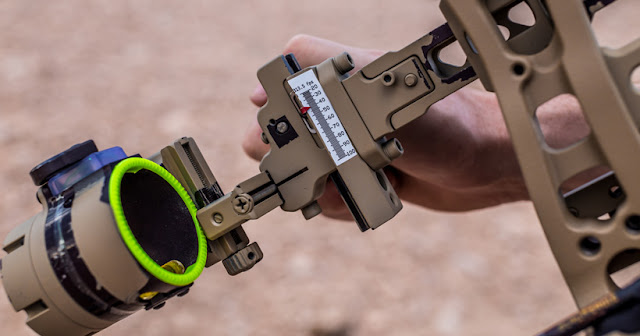How Archery Sights Work: The Easiest Way to Sight In a Bow
Well fear now not, this page must assist you to answer all your questions on putting in and using points of interest for your bow. If you're geared up to get commenced, let's leap proper in:
Single-pin and multi-pin presentations
You have to first understand the difference between the two most important kinds of bow points of interest which are used most customarily. There are unmarried pin points of interest (that is my non-public preferred), that have an aiming pin that may be changed with the aid of adjusting a pair of dials, to make amends for exceptional distances.
The different most important form of sights that might be used are multipin attractions (additionally referred to as fixed peg points of interest). These are points of interest that generally have between 3 and five aiming pins, which are carefully located before going out into the sphere.
They are known as fixed peg points of interest due to the fact that as soon as the pegs are initially set, they can't be easily moved or adjusted. During the commentary (or setup) system, every pin is carefully adjusted for a certain distance, as soon as set, the sight is ready for use.
Each pin is used to correctly target a distinct distance. So, for example, a 3-peg sight might also have one peg for aiming at a distance of 10 yards, another peg for aiming at a distance of 20 yards, and the ultimate peg for aiming at a distance of 30 yards.
The pins can be set for any backyard distance you need. Some commonplace multi-pin configurations are 20/30/40 yards, 15/20/25 yards, and 25/35/45 yards. Ideally, you need to set your aiming pins based totally now not simplest for your ability as an archer, however also the distances your bow is capable of taking pictures.
Note: Take a quick look at your bow - most bows of any type these days have fabricated holes already installed for attaching a sight. When setting up a sight (of any kind) for the first time, be cautious not to over-tighten the screws as you could harm your bow.
If you do not have already got one, make sure to seize a multi-size Allen wrench. You need this not only for attaching some attractions, however additionally for adjusting the aiming pins on a multi-pin sight.
How to apply unmarried pin attractions
Many archers opt to use single pinpoints of interest over their multi-pin opposite numbers for the simplicity in their use. Unlike many multi-pin sights, single-pin sights provide a totally neat visual photograph, allowing you to see the target as clearly as possible.Single pinpoints of interest additionally prevent you from by accident shooting the wrong pin, which has frustrated many hunters over time.
If you're new to the use of a single pin sight, start working towards with it as a whole lot as you may now; It can take a touch time to get used to a single pin sight, particularly when you have been the use of a multi-pin sight for any period of time.
Using single attractions on shifting targets
An excellent practice that maximum unmarried-pin sight users will use is to set it for a variety of 20 to 25 yards, whichever is maximum snug for you. Then, using the regarded variety of 20 yards, they may just purpose above or beneath the goal to adjust the gap.
Instead of shooting at the close to-actual range with a multi-pin sight, you simply make amends for distances by way of aiming high or low. Most archers can quite simply shoot from in the front of them up to forty to 50 yards away, without the want to modify your sight.
It could be something you will get used to after sufficient exercise.
How to watch with a unmarried pin
First, decide on what backyard distance you need to set your sight. As I referred to in advance, you can start by putting it to twenty or 25 yards. Then walk that some distance far from your target, both using a rangefinder or having already measured the proper distance faraway from the target.
Aim immediately at the center of the target and shoot 3 arrows of the identical type, one by one, taking your time to intention and shoot cautiously. They must be grouped quite close together, if it really is the case just eliminate the arrows and this time just shoot an unmarried arrow at the target.
If they don't cluster properly, something is inaccurate along with your shot or one in all your arrows needs to be marked.How to use multi-pin points of interest
While many archers love unmarried-pin attractions, the maximum usually used kind of bow sight is the multi-pin constant peg scope. As we included above, you can use a single pin sight for searching, it just wishes to be higher to make up for the distinction in yards among the factor your sight is about for and the actual distance from the goal.
Most hunters as an alternative use multi-pin points of interest, as though a goal started out to move, they are able to simplest use a distinctive distance pin. For instance: a deer is 20 yards away, you line up the 20-yard pin, all at once the deer runs 35 yards away, you then vicinity the deer among your 30 and 40-yard pins.
When it involves distance, having more than one waypoint makes it less complicated for a few humans to estimate the range of a shifting goal. Note that I stated for "a few" people.




Comments
Post a Comment